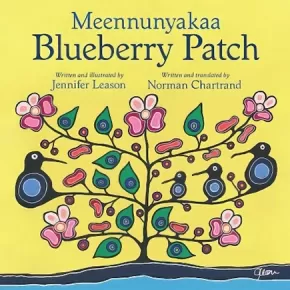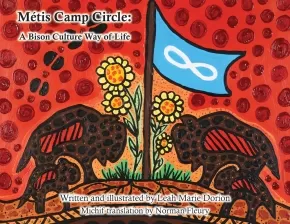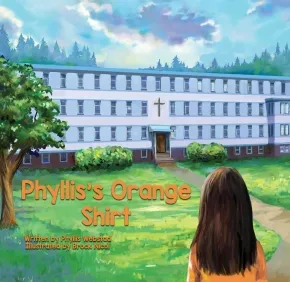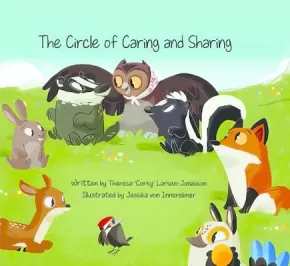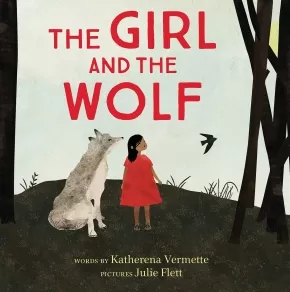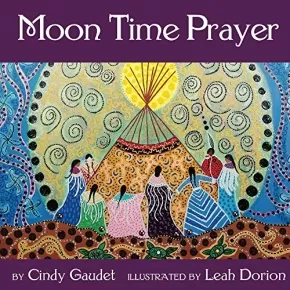
Métis
136
-
150
of
214 Results;
Sort By
Go To
of 15
Northwest Resistance
$21.95
Artists:
Format:
Paperback
Text Content Territories:
Indigenous Canadian; Métis;
ISBN / Barcode: 9781553798316
Synopsis:
Synopsis:
Echo Desjardins is adjusting to her new home, finding friends, and learning about Métis history. She just can’t stop slipping back and forth in time. One ordinary afternoon in class, Echo finds herself transported to the banks of the Red River in the summer of 1869. All is not well in the territory as Canadian surveyors have arrived to change the face of territory, and Métis families, who have lived there for generations, are losing access to their land. As the Resistance takes hold, Echo fears for her friends and the future of her people in the Red River Valley.
Educator & Series Information
This is volume 3 in the graphic novel series, A Girl Called Echo, by Katherena Vermette.
Books in this series include:
Volume 1: Pemmican Wars
Volume 2: Red River Resistance
Volume 3: Northwest Resistance
Volume 4: Road Allowance Era
Recommended for grades 5 to 9 by publisher.
Katherena Vermette, a Governor General's Award-winning author deftly enters a format typically dominated by male creators with this graphic novel series, A Girl Called Echo. Featuring compelling illustrations, a female main character, and the contemporary foster care system, the series follows Echo Desjardins as she discovers her Métis heritage firsthand while slipping back and forth through time.
This book is available in French: Elle s'appelle Echo Tome 3: La résistance du Nord-Ouest
Additional Information
48 pages | 6.50" x 10.00"
On apprend du soleil
$22.99
Artists:
Format:
Hardcover
Text Content Territories:
Indigenous Canadian; First Nations; Anishinaabeg;
ISBN / Barcode: 9781989122402
Synopsis:
Synopsis:
Ce magnifique livre rassemble les peintures vibrantes de l’artiste métisse Kristy Cameron et les poèmes en rimes de l’auteur métis David Bouchard. Ce poème s’inspire des Sept enseignements sacrés et partage avec nous les profondes leçons que nous pouvons tous apprendre du soleil.
Educator Information
Recommended for ages 6 to 9.
This book is available in English: We Learn from the Sun
Additional Information
32 pages | 11.16" x 9.13"
We Learn from the Sun (HC)
$22.99
Artists:
Format:
Hardcover
Text Content Territories:
Indigenous Canadian; First Nations; Anishinaabeg;
ISBN / Barcode: 9781989122396
Synopsis:
Synopsis:
This richly illustrated book by writer David Bouchard and illustrator Kristy Cameron, weaves together Woodland style paintings with a rhythmic poem about the spiritual lessons that we can learn from the Sun and the seven sacred teachings.
Educator Information
David Bouchard is a bestselling author, speaker and educator. He is Canada’s most sought after public speaker. We Learn from the Sun is an Indigenous rhyming poem based on his best selling book Seven Sacred Teachings.
An accompanying lesson plan and resource guide entitled We Learn from the Sun: Lesson Plans and Resources can be found on our site as well.
This book is available in French: On apprend du soleil.
Recommended for ages 5 to 12.
This resource is included in the Canadian Indigenous Books for Schools 2020/2021 resource list for grades K to 7 for Language Arts.
Additional Information
34 pages | 11.00" x 9.00" | 26 colour illustrations
Birdsong
$22.95
Artists:
Format:
Hardcover
Text Content Territories:
Indigenous Canadian; First Nations; Cree (Nehiyawak);
ISBN / Barcode: 9781771644730
Synopsis:
Synopsis:
A tender, luminous portrait of art, nature, and connecting across generations.
When a young girl moves from the country to a small town, she feels lonely and out of place. But soon she meets an elderly woman next door, who shares her love of arts and crafts. Can the girl navigate the changing seasons and failing health of her new friend? Acclaimed author and artist Julie Flett’s textured images of birds, flowers, art, and landscapes bring vibrancy and warmth to this powerful story, which highlights the fulfillment of intergenerational relationships and shared passions.
Awards
- TD Canadian Children's Literature Award
Educator Information
Recommended Ages: 3 to 8
Recommended Grade Range: Preschool to Grade 3.
Curriculum Connections: Family - Indigenous, Friendship, Emotions and Feelings, Nature, Seasons
Gorgeous artwork captures life cycles, changing seasons, and the passing of life, providing a gentle way to discuss difficult subject matter with youth including loneliness, death, and grief.
Guided Reading Level: L
RRL: 19
Common Core State Standards
W.2.3,5,7,8
SL.2.1,1b,1c,2,3,4,6
RF.2.3,3d,3f,4,4a,4c
L.2.3,4,4a,4d,5,5a,5b,6
Recommended in the Canadian Indigenous Books for Schools 2020/2021 resource list as being useful for grades K-2 in these areas: English Language Arts, Science, and Social Studies.
Additional Information
48 pages | 10.00" x 10.00"
Blueberry Patch / Meennunyakaa
$19.95
Artists:
Format:
Hardcover
Text Content Territories:
Indigenous Canadian; First Nations; Anishinaabeg; Ojibway; Saulteaux;
ISBN / Barcode: 9781926886589
Synopsis:
Synopsis:
Based in Duck Bay, Manitoba, in the 1940s, an Elder shares his experience of packing up to go out to collect blueberries, a traditional gathering that took place every summer. He describes the journey and landscape with humor and such vivid imagery that readers will see themselves there with him, boarding the trail of wagons from surrounding communities and heading east toward the blueberry patch. The Elder's stories offer a journey back in time and are complemented by images of fields of plump blueberries, tall green grass, bannock baking over an open fire, clear freshwater streams and the tents the people slept in.
Educator Information
Written in English and Anishinaabemowin. Includes a page of after-reading activities for kids at the back of the book that both test reading comprehension and encourage further inquiry and exploration.
Recommended for ages 6-8.
Themes: Manitoba, Berries, Food Sovereignty, Indigenous, Traditions, Food, Culture, Family, Community, Anishinaabe.
Includes a recipe for bannock.
Translated by Norman Chartrand.
Recommended in the Canadian Indigenous Books for Schools 2020/2021 resource list as being useful for grades K-3 in these areas: English Language Arts, Art, Math, Science, and Social Studies.
Additional Information
32 pages | 8.00" x 8.00"
Johnny's Pheasant
$23.99
Artists:
Format:
Hardcover
Text Content Territories:
Indigenous American; Native American;
ISBN / Barcode: 9781517905019
Synopsis:
Synopsis:
An encounter with a pheasant (which may or may not be sleeping) takes a surprising turn in this sweetly serious and funny story of a Native American boy and his grandma
"Pull over, Grandma! Hurry!” Johnny says. Grandma does, and Johnny runs to show her what he spotted near the ditch: a sleeping pheasant. What Grandma sees is a small feathery hump. When Johnny wants to take it home, Grandma tries to tell him that the pheasant might have been hit by a car. But maybe she could use the feathers for her craftwork? So home with Grandma and Johnny the pheasant goes . . .
It’s hard to say who is most surprised by what happens next—Grandma, Johnny, or the pheasant. But no one will be more delighted than the reader at this lesson about patience and kindness and respect for nature, imparted by Grandma’s gentle humor, Johnny’s happy hooting, and all the quiet wisdom found in Cheryl Minnema’s stories of Native life and Julie Flett’s remarkably evocative and beautiful illustrations.
Additional Information
32 pages | 9.50" x 8.50"
Métis Camp Circle: A Bison Culture Way of Life
$17.50
Artists:
Text Content Territories:
Indigenous Canadian; Métis;
ISBN / Barcode: 9781926795959
Synopsis:
Synopsis:
During much of the nineteenth century, bison hunting was integral to the Métis’ social, economic, and political life. As “people of the buffalo,” the Métis were bison hunters par excellence. In Métis Camp Circle: A Bison Way of Life, author and artist Leah Marie Dorion transports young readers back in time when bison were the basis of Métis lifeways on the Plains. Vibrantly illustrated and infused with important cultural teachings, this charming book skillfully informs us about this important period of Métis history.
Educator Information
Grade Level: Primary (recommended by Gabriel Dumont Institute).
Dual-language: English and Michif. Includes a CD with English and Michif narration.
Includes back matter on Bison as a Food Source; Organizing the Bison Hunt; Bison Artefacts; Pemmican; Patrice Fleury Remembrance (on the bison hunt); and more information about the author/illustrator and translator.
Additional Information
43 pages
Phyllis's Orange Shirt
$11.95
Artists:
Format:
Hardcover
Text Content Territories:
Indigenous Canadian; First Nations; Salish; Interior Salish; Secwepemc (Shuswap); Stswecem'c Xgat'tem;
ISBN / Barcode: 9781989122242
Synopsis:
Synopsis:
When Phyllis was a little girl she was excited to go to residential school for the first time. Her Granny bought her a bright orange shirt that she loved and she wore it to school for her first day. When she arrived at school her bright orange shirt was taken away. This is both Phyllis Webstad's true story and the story behind Orange Shirt Day which is a day for us all to reflect upon the treatment of First Nations people and the message that 'Every Child Matters'.
Educator Information
Phyllis's Orange Shirt is an adaptation of The Orange Shirt Story which was the best selling children's book in Canada for several weeks in September 2018. This true story also inspired the movement of Orange Shirt Day which could become a federal statutory holiday. A page of information about this day is included at the end of the book. A short author biography is also included.
Adapted for ages 4-6.
Recommended in the Canadian Indigenous Books for Schools 2020/2021 resource list for grades K-1 in the areas of English Language Arts and Social Studies.
This book is available in French: Le chandail orange de Phyllis
Additional Information
30 pages | 9.00" x 8.00"
Spirit Bear: Honouring Memories, Planting Dreams: Based on a True Story
$12.95
Artists:
Format:
Paperback
Text Content Territories:
Indigenous Canadian;
ISBN / Barcode: 9781775191490
Synopsis:
Synopsis:
Spirit Bear: Honouring Memories, Planting Dreams is the latest addition to the award-winning picture book series written by Order of Canada recipient Cindy Blackstock (Gitxsan Nation) and illustrated by Amanda Strong (Michif)!
Spirit Bear is on his way home from a sacred ceremony when he meets Jake, a friendly dog, with a bag full of paper hearts attached to wood stakes. Jake tells Spirit Bear that school children and residential school survivors will plant the hearts when a big report on residential schools called the Truth and Reconciliation Commission (TRC for short) is shared. The TRC will have Calls to Action so we can all help end the unfairness and make sure this generation of First Nations, Métis, and Inuit children grow up healthy and proud!
Educator & Series Information
Recommended for ages 6 to 12.
This book is part of the Spirit Bear series.
This book is available in French: Spirit Bear: Rendre hommage aux souvenirs, semer des rêves: Basé sur une histoire vraie
Additional Information
66 pages | 8.25" x 8.25"
The Big Tease: A Story of Eliza Delorme and her Cousin, Édouard Beaupré, the Willowbunch Giant
$17.50
Artists:
Text Content Territories:
Indigenous Canadian; Métis;
ISBN / Barcode: 9781926795881
Synopsis:
Synopsis:
The Big Tease is a timeless story because we’ve all been involved in teasing to some degree, and often it has involved family. Time with family has always been important to Métis families. Like most families, there is usually at least one person who likes to tease others. In this story, it is Eliza, grandmother to author Wilfred Burton, and cousin to Édouard Beaupré. The Big Tease provides a lovely human touch to Édouard Beaupré’s life before his fame as the “Willow Bunch Giant” and his early tragic death took him from his beloved family.
Wilfred Burton’s imaginative narrative passes his grandmother’s story to today’s generation of story lovers. Illustrator George Gingras brings this true but somewhat embellished story to life with colourful images reflective of the Métis lifestyle at the time.
Educator Information
Grade Level: Primary (recommended by Gabriel Dumont Institute).
Dual-language: English & Michif
Additional Information
Michif translation by Normal Fleury.
The Circle of Caring and Sharing
$11.95
Artists:
Format:
Hardcover
Text Content Territories:
Indigenous Canadian; First Nations;
ISBN / Barcode: 9781989122235
Synopsis:
Synopsis:
When two foxes, who are best friends, have a fight it upsets the whole community of animals. Kokom the Owl knows just what to do and brings together all the animals and holds a Sharing Circle.
Educator Information
This book is an adaptation of the book The Sharing Circle for a younger audience (ages 4-6). Explores topics of respect, communication, relationships. Useful social-emotional learning resource.
Includes a page of Plains Cree animals and their phonetic pronunciations at the end of the book.
Recommended in the Canadian Indigenous Books for Schools 2020/2021 resource list as being useful for grades K-3 in these areas: English Language Arts.
This book is available in French: Le cercle d'aide et de partage
Additional Information
32 pages | 9.00" x 8.00"
The Girl and the Wolf
$22.95
Artists:
Format:
Hardcover
Text Content Territories:
Indigenous;
ISBN / Barcode: 9781926886541
Synopsis:
While picking berries with her mother, a little girl wanders too far into the woods. When she realizes she is lost, she begins to panic. A large grey wolf makes a sudden appearance between some distant trees. Using his sense of smell, he determines where she came from and decides to help her. Through a series of questions from the wolf, the little girl realizes she had the knowledge and skill to navigate herself—she just needed to remember that those abilities were there all along.
Synopsis:
An empowering Indigenous twist on a classic wolf narrative.
While picking berries with her mother, a little girl wanders too far into the woods. When she realizes she is lost, she begins to panic. A large grey wolf makes a sudden appearance between some distant trees. Using his sense of smell, he determines where she came from and decides to help her. Through a series of questions from the wolf, the little girl realizes she had the knowledge and skill to navigate herself—she just needed to remember that those abilities were there all along.
Reviews
"The Girl and the Wolf is about a young girl who wanders too far in the woods and realizes she is lost. A large grey wolf appears, trying to help her find her way back. Through this interaction with the wolf, the girl realizes she has the knowledge and skills all along." - The Dalai Lama Center
"The Girl and the Wolf is about a young girl who wanders too far in the woods and realizes she is lost. A large grey wolf appears, trying to help her find her way back. Through this interaction with the wolf, the girl realizes she has the knowledge and skills all along." - The Dalai Lama Center
Educator Information
Themes: independence, children, knowledge, power, strength, nature, instincts, survival skills.
Themes: independence, children, knowledge, power, strength, nature, instincts, survival skills.
Recommended in the "Canadian Indigenous Books for Schools 2019-2020" resource list as being useful for K-3 students in these subject areas: English Language Arts, Social Studies
Additional Information
32 pages | 8.00" x 8.00"
32 pages | 8.00" x 8.00"
The Voyageurs: Forefathers of the Métis Nation
$20.00
Artists:
Format:
Paperback
Text Content Territories:
Indigenous Canadian; Métis;
ISBN / Barcode: 9781926795904
Synopsis:
Synopsis:
The Voyageurs: Forefathers of the Métis Nation tells an old story—integral to both the birth of the Métis Nation and to the development of Canada—in a new and engaging format. Zoey Roy has eloquently transformed the history of the voyageurs into a spoken-word performance poem which she has shared live at numerous events over the last several years. In this innovative resource, Zoey masterfully informs the reader and listener of the voyageurs’ history, background, and lifeways in a format popular with today’s youth. To fully appreciate Zoey’s masterful delivery, a DVD to accompany this book was essential. Combined with Jerry Thistle’s evocative illustrations and Norman Fleury’s Michif narration, this resource becomes a teaching tool, a work of art, and the impetus for further research all in one.
Educator Information
Grade Level: The publisher of this book recommends it for all ages.
Dual-language: English and Michif.
Includes a DVD.
Recommended in the Canadian Indigenous Books for Schools 2019-2020 resource list as being useful for grades 5-10 with regard to these subjects: English Language Arts, Art, Social Studies.
Additional Information
45 pages | 10.98" x 8.42"
Indigenous Peoples Atlas of Canada
$99.99
Format:
Hardcover
Text Content Territories:
Indigenous Canadian; Métis; Inuit; First Nations;
ISBN / Barcode: 9780986751622
Synopsis:
Synopsis:
Indigenous perspectives much older than the nation itself shared through maps, artwork, history and culture.
The Royal Canadian Geographical Society, in partnership with Canada's national Indigenous organizations, has created a groundbreaking four-volume atlas that shares the experiences, perspectives, and histories of First Nations, Inuit and Métis peoples. It's an ambitious and unprecedented project inspired by the Truth and Reconciliation Commission's Calls to Action. Exploring themes of language, demographics, economy, environment and culture, with in-depth coverage of treaties and residential schools, these are stories of Canada's Indigenous Peoples, told in detailed maps and rich narratives.
This extraordinary project offers Canada a step on the path toward understanding.
The volumes contain more than 48 pages of reference maps, content from more than 50 Indigenous writers; hundreds of historical and contemporary photographs and a glossary of Indigenous terms, timelines, map of Indigenous languages, and frequently asked questions. All packaged together in a beautifully designed protective slipcase.
Educator Information
Recommended for ages 13+.
The Indigenous Peoples Atlas of Canada includes a four volume print atlas, an online atlas, an app, and more!
Additional Information
322 pages | 10.50" x 12.87"
Moon Time Prayer - 2nd Edition
$20.50
Artists:
Format:
Paperback
ISBN / Barcode: 9781775223146
Synopsis:
Synopsis:
What stories are girls told of womanhood? Are they of strength, grace, and creativity?
Not long ago, they heard whispered tales of impending curses. Physical changes were clinically defined in textbooks, but not spoken of openly. Embarrassment was mandatory. Shame assured. What narratives will inform the women of tomorrow?
Written for young girls and women of all ages, Moon Time Prayer offers an inspiring perspective. Over strawberry leaf tea, we join young Sparrow as her Auntie and Grandmother share the sacred teachings of women's Moon Time. Indigenous wisdom, passed through generations, is offered in this playful, yet powerful, story.
Author, Cindy Gaudet Ph.D., invites readers to engage in a lifelong connection with the power of their natural cycles. Change the narrative and celebrate the first rite of passage with Moon Time Prayer, featuring breathtaking artwork by Leah Dorion, and a 28-day moon journal.
Reviews
“This is such an important book, as it will assist us in reclaiming traditions of the sacred feminine that once were common among our people. Every girl should have a copy!” - Kim Anderson, Cree/Métis author
Educator Information
Recommended for ages 9 to 13.
Additional Information
80 pages | 8.50" x 8.50" | Paperback | Revised, 2nd Edition
Sort By
Go To
of 15







